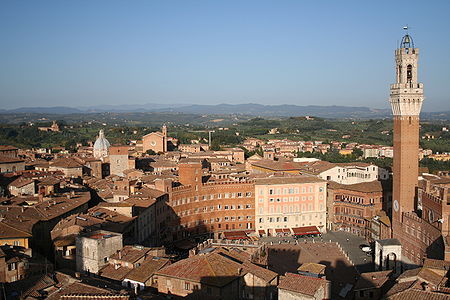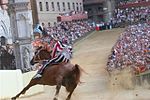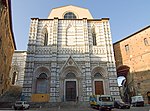Siena

Siena ( see-EN-ə, Italian: [ˈsjɛːna, ˈsjeːna] (listen); Latin: Sena Iulia) is a city in Tuscany, Italy. It is the capital of the province of Siena. The city is historically linked to commercial and banking activities, having been a major banking center until the 13th and 14th centuries. Siena is also home to the oldest bank in the world, the Monte dei Paschi bank, which has been operating continuously since 1472.Several significant Renaissance painters worked and were born in Siena, among them Duccio, Ambrogio Lorenzetti, Simone Martini and Sassetta, and influenced the course of Italian and European art.The University of Siena, originally called Studium Senese, was founded in 1240, making it one of the oldest universities in continuous operation in the world.Siena was one of the most important cities in medieval Europe, and its historic centre is a UNESCO World Heritage Site. From January until the end of September of 2021 it had about 217,000 arrivals, with the largest numbers of foreign visitors coming from Germany, France and the Netherlands. Siena is famous for its cuisine, art, museums, medieval cityscape and the Palio, a horse race held twice a year in Piazza del Campo.
Excerpt from the Wikipedia article Siena (License: CC BY-SA 3.0, Authors, Images).Siena
Via Di Beccheria, Siena San Prospero
Geographical coordinates (GPS) Address Nearby Places Show on map
Geographical coordinates (GPS)
| Latitude | Longitude |
|---|---|
| N 43.318611111111 ° | E 11.330555555556 ° |
Address
Via Di Beccheria 3
53100 Siena, San Prospero
Tuscany, Italy
Open on Google Maps










